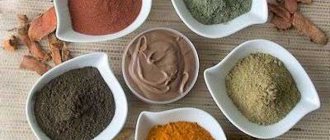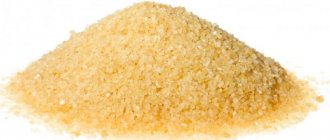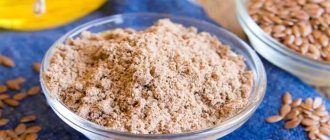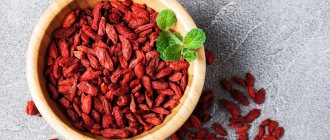Black radish - composition and calorie content
[ads2]
Radish was known to the ancient Egyptians: its properties are unique, it is able to restore strength and increase energy. The taste of the root vegetable is such that it can easily replace salt in dishes, which is very important for those following a salt-free diet. Crispy, moderately spicy - this is how it appears in dishes. But the vegetable can boast not only of taste, but also of composition, and long-term preservation of nutrients - throughout the cold period of the year.
Radish is most often eaten raw, and the body receives a lot of vitamins and other useful components:
- Thiamine
- Riboflavin
- Pantothenic acid
- Vitamins E, A, PP
- Sodium
- Potassium
- Calcium
- Iron
- Phosphorus, etc.
The calorie content of radish is low due to the high amount of fiber and minimal fat content. Fatty acids are present in small doses in the essential oils of radish, which determine its special taste and aroma. The product contains proteins, carbohydrates, glycosides, organic acids, and ash. Radish contains up to 90% water, which undoubtedly makes it light and dietary.
How many calories are in black radish?
Fresh radish is the most useful, and its nutritional value is deciphered by the following numbers:
- Proteins – 1.9 g
- Fats – 0.2 g
- Carbohydrates – 6.7 g
- Fiber and other substances – about 2 g
Black radish with honey: recipes for treating coughs and how to take them for adults and children
The most popular, simple and effective remedy for the treatment of cough and bronchitis.
Do: Mix root juice with high-quality honey in different proportions and take 2 tablespoons 30 minutes before meals 3 times a day.
Another good folk recipe.
Do: Take a large, hard root vegetable without damage, wash and dry. Carefully cut off the cap and remove the center to make a glass.
Put natural honey into the recess up to the middle or a little more (you can use sugar if you are allergic to honey), close the top and let it brew for 5-6 hours. Take the resulting medicine 1 tbsp. spoon for adults and 1 teaspoon for children before meals.
Important! Black radish is very close to horseradish and onion in terms of the amount of phytoncides.
Green radish - calorie content
[ads3]
A close relative of the black radish, its green “sister,” also does not leave people’s tables in our time, because it is often the most important source of vitamins and minerals, inexpensive and accessible. Green radish has almost the same composition as black radish, the differences are in the concentration of substances in essential oils. Due to the lower content of specific rare oils, the root vegetable has a less pungent taste, without bitterness. Many people do not even soak it in water before eating, and those who have a strong stomach eat the vegetable almost every day.
The calorie content of green radish is slightly lower than that of black radish - about 32 kcal. The content of basic nutrients is also similar, but proteins – 2 g, carbohydrates – 6.5 g. Green radish makes excellent vegetable salads, for example, if you season it with oil and lemon juice, and use grated apple, carrots, and fresh vegetables among other ingredients. cucumber, cabbage (Peking cabbage, white cabbage). The amount of vitamins in steamed or stewed radish will be slightly reduced, but eating it after heat treatment can safely harm your stomach.
Benefits of black radish
After carefully reading this section of the article, you will definitely include this root vegetable in your daily diet.
1. Radish helps remove excess fluid from the body, thereby relieving swelling, and also dissolves and removes stones and sand in the kidneys and gall bladder.
2. Helps eliminate cold symptoms, fights viruses and helminths in the body. Radish in combination with garlic or onion will strengthen the walls of blood vessels and increase intestinal motility.
3. The most famous way to use this root vegetable in folk medicine is to treat coughs, but it also helps treat bronchitis, pneumonia, whooping cough, and partially relieves the symptoms of bronchial asthma.
4. Increases appetite, enhances the secretion of gastric juice, and dietary fiber enhances metabolism. All these factors help you lose weight slowly and without harm to your health.
5. Black radish compresses are used for radiculitis, severe bruises and sprains.
6. Helps normalize cholesterol levels, increases hemoglobin, and the high iodine content promotes proper functioning of the thyroid gland.
7. It is recommended to consume the root vegetable at any stage of hepatitis.
8. The vegetable contains lysozyme, which is necessary for the prevention of malignant tumors.
Radish with butter - calories
Most of those who love this root vegetable eat radish with butter. Cooking radish with vegetable oil takes a couple of minutes, and you can use both green and black root vegetables for the dish. The procedure for creating a “masterpiece” is as follows:
- Peel and wash the radishes.
- Cut into thin circles, which are then cut into 2-4 pieces.
- Salt the vegetable slices and mash them a little with your hands to release the juice.
- Place radishes on a plate.
- Drizzle with a small amount of cold-pressed sunflower oil.
Benefits of black radish juice
1. The juice has a bactericidal effect, so it is recommended to take it for colds. The juice helps cope with cough (dry and wet), bronchitis, and pneumonia.
2. The root vegetable is a natural antibiotic that is completely harmless. At the first symptoms of flu, cold or sore throat, drink juice with honey.
3. It has antioxidant properties, promotes rejuvenation of the entire body and skin.
4. Juice helps speed up metabolism, secrete gastric juice, and normalizes the entire digestive process in the body, which is very important for overweight people and those prone to obesity.
5. Helps remove sand and stones from the kidneys.
6. Eliminates bad breath, disinfects the oral cavity, which is the prevention of pulpitis and stomatitis.
7. The drink reduces the level of “bad” cholesterol, cleans and strengthens blood vessels, which prevents thrombosis, varicose veins, atherosclerosis and various diseases of the cardiovascular system.
8. Therapists recommend taking the juice for chronic hepatitis, bronchitis, cough and even cirrhosis of the liver.
9. The drink acts as an anthelmintic.
10. I make compresses from the juice for joint pain and to treat purulent formations and ulcers on the skin.
11. Masks based on radish juice are used to remove age spots and fine wrinkles.
On a note! To get the juice of the root vegetable, you need to wash the vegetable, peel it, cut it into small pieces, transfer it to a glass container and cover it with sugar. After 2-3 hours the juice will appear.
Dietary properties of radish
Radish, the calorie content of which we will consider in our article today, like most other vegetables, is a product with low energy value. It is this quality that determines the interest in radish for those of us who are struggling with excess body weight or are simply trying to monitor their weight. So, let's remember how radish can be useful for us.
Radish is, one can say without exaggeration, a unique product for those who would like to improve their health. The roots of this garden crop are a rich source of various mineral components.
They contain an average of 13% dry matter, a number of vitamins, for example, C, B1, B2, as well as a number of organic acids, essential oils and glucosides. Due to its specific taste, radish is widely used as an ingredient in many dishes (for example, in preparing salads).
The composition of its root vegetables is rich and varied - up to 90% water, sugar, fiber, sulfur-containing substances that determine its phytoncidal and bactericidal effect, acids, compounds of sodium, potassium, calcium, magnesium, phosphorus, iron, and a number of amino acids.
Thanks to such a wonderful composition, radish is especially useful in winter and early spring, as it helps the body cope with a deficiency of vitamins and minerals. Radish has a strong destructive effect on pathogens.
Radish stimulates appetite, enhances the secretion of gastric juice, and has a diuretic and choleretic effect. The fiber in its composition helps remove excess cholesterol from the body, which is essential in the prevention of atherosclerosis. Radish (especially juice) has a diuretic effect and is useful for kidney stones.
During the research, it was found that radish fruits have the following composition (per 100 grams of pure product): 88 grams of water, 1.9 grams of proteins, 0.2 grams of fat, 8.1 grams of carbohydrates. We do not list the rest of the composition. Based on these data, it is concluded that:
The average calorie content of radish is 30 kcal per 100 grams of product. Which makes it a wonderful component in any diet.
What is the calorie content of radish, different varieties? And here it is:
Pickled
Pickling is not the most common way to process root vegetables, but it is an excellent way to preserve a supply of vitamins and nutrients for the winter. Green vegetables and Daikon can be used for the process. The calorie content of the finished product in the first case is 27 kcal per 100 grams, in the second - 20 kcal per the same amount, which means that both options may well be present on the table of someone losing weight.
To pickle green radish, take a root weighing 500 grams. It is thoroughly washed and peeled. Chop using a Korean carrot knife. The brine is prepared in this way: add a quarter tablespoon of salt, half a tablespoon of sugar and vinegar to a glass of water. After mixing water, sugar and salt, the marinade is placed on the stove and brought to a boil. After removing from heat, add vinegar. The chopped vegetable is placed in a jar (when preparing for the winter, the jar must first be sterilized). Pour in hot marinade. Close the jar with a lid and leave for a day in a warm place. The finished product can be consumed separately or together with vegetable oil - sesame, olive, flaxseed. Of course, in this case the calorie content increases slightly.
To pickle Daikon, the washed and peeled vegetable is dried until pliable in the sun. The process takes about 2 weeks. After the Daikon reaches the required consistency, that is, it begins to bend slightly, it can be pickled. To do this, the root vegetable is fermented under pressure with salt for a couple of months. You can also add kelp, hot red pepper or sugar. The finished dish acquires a yellowish tint and has a specific, slightly spicy taste.
Radish recipes
What can you prepare from this vegetable at home? Yes, a lot! Here is one of the recipes:
Radish salad
Products
- Tomatoes - 6 pieces
- Radish - 1 piece
- Onion - 1 piece
- Vegetable oil - 4 tablespoons
- Salt - to taste
The radish is pre-peeled. Then the radish is grated on a coarse grater. Tomatoes need to be cut into slices, then combined with radish. Add salt, chopped onions and vegetable oil. Mix all ingredients. Before serving, the finished salad can be decorated with a sprig of any greenery - your choice. That's all! Eat for your health, especially since the low calorie content of radishes will definitely not spoil your figure.
Recipes for weight loss
The benefits of the product for weight loss are due to the small amount of calories and the beneficial effect on the gastrointestinal tract. Root juice, salads, and cosmetics based on it are used.
To prepare a drink from black radish and honey you need:
- Rinse 10 kg of product thoroughly, grate and squeeze out the juice. The peel should not be removed.
- Pour 1 liter of honey into the resulting juice and mix thoroughly.
The resulting drink should be stored in the refrigerator and consumed a quarter glass before meals.
To prepare a salad for weight loss, you need the following ingredients:
- fresh carrots – 2 pcs.;
- apple (unsweetened) – 1 pc.;
- black radish root – 1 pc.;
- sour cream – 100 g.
Preparation:
- Grate carrots, radishes and apples or cut into thin strips.
- Add sour cream and stir. If desired, you can use yogurt, kefir or olive oil instead of sour cream.
- You can soften the taste of radish by adding 1 teaspoon of honey to the salad.
Radish salad for weight loss
Black radish for weight loss can be used externally by making a cosmetic product from it. It also helps fight cellulite, stretch marks and flaking of the skin.
To prepare the product you need:
- Grate 2 root vegetables.
- Mix the resulting mass with three tablespoons of sea salt and one tablespoon of honey.
- Apply the finished mixture to the steamed skin of problem areas (thighs, abdomen, buttocks), massage and rinse after half an hour.
What are the benefits of radish for weight loss?
What are the benefits of radish for those who want to lose weight? Here's what:
The presence of a large amount of fiber helps cleanse the intestines of waste and toxins, which makes the skin fresher, the stomach flatter, and the indicator on the scale reduced.
The lack of fat and minimal calorie content will certainly not lead to weight gain, so eat radish often (but taking into account contraindications).
Radish minerals support normal water-salt metabolism, as a result of which swelling quickly goes away, weight decreases, as does body volume.
Radish prevents fat, cholesterol, and salt deposits from accumulating, which also makes the appearance more attractive.
Radish enzymes and its pungent esters help improve digestion and quickly digest and assimilate heavy foods. Extra pounds will not accumulate when radishes are combined with meat and other high-calorie foods.
After eating radish, metabolism accelerates, which cannot but contribute to slimness (especially in combination with sports).
Radish has a very low calorie content and can be easily added to light vegetable salads. However, this should be done with caution, since the enzymes in its composition stimulate the appetite and instead of one serving of the dish, you can easily eat two. Depending on the desired result, recipes containing radish also change.
What do you eat it with?
Carefully!
The hard fiber of radish makes it unsuitable for nutrition for people suffering from gastritis, pancreatitis, and cholelithiasis.
Radish is added to salads. And not only!
Dumplings
Ingredients for the dough: flour - 1.5 cups, water - 80 ml, half an egg, salt.
For the filling: radish - 250 g, green onion - 4-5 feathers, butter or vegetable oil - 1.5 tbsp. spoons.
Preparation: peel the radish, grate it on a coarse grater, fry a little in butter or vegetable oil, add sour cream, finely chopped green onions to taste and then cook the dumplings as usual.
Chemical composition and beneficial properties
All types of radish contain the following beneficial elements:
- B vitamins , which help normalize metabolism and have a general strengthening effect;
- vitamin PP , which accelerates fat metabolism and tissue growth;
- vitamin C , which strengthens the immune system and helps normalize the functioning of all systems and organs;
- folic acid , which helps in the treatment of liver and kidney diseases;
- pantothenic acid , which promotes the normal functioning of the nervous and immune systems;
- fiber , which improves digestion and intestinal motility;
- mustard oil , which has a diuretic and choleretic effect and normalizes the functioning of the gastrointestinal tract;
- phytoncides – substances with antibacterial properties;
- lysozyme is a protein compound that is a powerful antiseptic. This component helps destroy pathogenic bacteria in the body and increases resistance to infections.
The beneficial properties of the vegetable for men, women and children are given in the table:
| Groups of people | Useful properties of radish and recommendations for use |
| Men | The vegetable is beneficial due to its ability to increase testosterone levels. However, this effect is insignificant, so the effect can only be achieved in combination with proper nutrition and a healthy lifestyle. For prostate pathologies, it is recommended to eat radish salad 2-3 times a week. The inflammatory process is significantly reduced. Eating raw vegetables eases hangover symptoms |
| Women | For women who experience irregularities in the menstrual cycle and scanty periods, root vegetable juice is useful, as it helps restore the cycle |
| Children | The vegetable strengthens the child's immunity. The root vegetable can be given starting from three years of age in small quantities. It is recommended to include daikon in your diet, which, due to its soft structure, does not irritate the gastric mucosa. It is permissible to give black and white radishes to a child, starting from the age of five, twice a week. A serving at one time should not exceed 50 grams |
Pregnant women are recommended to consume the root vegetable in small quantities. It can be added to salads made from other vegetables. But first you need to consult with the doctor who is caring for the pregnancy, since if you are predisposed to uterine hypertonicity, eating the vegetable can cause a miscarriage.
Eating a small amount of radish during breastfeeding is beneficial as it helps increase milk production. But if a child develops colic or flatulence, the vegetable should be excluded from the diet.
Main varieties of radish
Seed radish is an annual or biennial plant. Several varieties of this crop are known.
Black
Black radish
The vegetable is a round or oblong root vegetable with black skin and white flesh and has a pronounced bitter taste.
This variety takes first place in terms of the amount of useful substances. The product speeds up metabolism, strengthens the immune system, and is considered a natural antibiotic. Black radish juice is a choleretic agent.
Red
Red radish
Red radish is a variety of black radish. This root vegetable has red skin and white flesh; it looks like a large radish.
Eating vegetables helps increase appetite. The root vegetable is an effective remedy for constipation and removes harmful substances from the body. The vegetable has a diuretic effect, therefore preventing the appearance of edema.
Margelanskaya (Chinese)
Margelan radish
This is another variety of black radish. It is a round or oval root vegetable, the skin of which can have different shades: white, green, red, purple. This type of radish has white, red or purple flesh.
Chinese radish increases the secretion of gastric juice, and therefore helps increase appetite.
White
White radish
The vegetable has a very pungent taste. The color of the root crop is light green at the base, turning into white.
Radish is characterized by a pronounced antibacterial effect due to its high content of phytoncides. It strengthens the immune system and is considered an effective natural cough remedy.
Japanese
Japanese radish
The plant is a variety of white radish. The vegetable is also called daikon or bailobo. It is distinguished by long (up to 50 cm) white roots and a sweet taste.
Radish has a short shelf life - no more than two weeks. Daikon has a diuretic effect and is widely used in folk medicine as a means to cleanse the body of toxins.
Green
Green radish
The variety has a pleasant, delicate taste with almost no bitterness. The root vegetable has an oblong shape with green skin and red flesh.
Green radish helps lower blood sugar levels, so it is useful for diabetes. The product contains a large amount of iron, it is recommended to use it for anemia.
Calories and nutritional value
BJU and the number of calories contained in various types of radish are given in the table:
| Type of radish | Proteins (per 100 g of product) | Fats (per 100 g of product) | Carbohydrates (per 100 g of product) | Calorie content (kcal per 100 g) |
| Black | 1,9 | 0,2 | 6,7 | 32 |
| Red | 1,2 | 0,1 | 3,4 | 20 |
| Margelanskaya | 1,2 | 0 | 4,1 | 21 |
| White | 1,4 | 0 | 4,1 | 21 |
| Green | 2 | 0,2 | 6,5 | 32 |
| Daikon | 1,2 | 0 | 4,1 | 21 |
Is it possible to eat green radish during pregnancy and breastfeeding?
Eating green radish during pregnancy and breastfeeding is not prohibited. On the contrary, experts strongly recommend introducing the product into the diet in case of digestive dysfunction. During pregnancy, the root vegetable helps replenish the supply of nutrients in the body, which has a positive effect on the woman’s well-being and the further development of the child.
In the first trimester, a unique product relieves the unpleasant symptoms of toxicosis. In the third trimester of pregnancy, radish helps cope with swelling. But under certain conditions it can provoke termination of pregnancy. Therefore, special care must be taken when using it during this period.
During breastfeeding, it is recommended to introduce the product into the diet with caution, not earlier than 2 months after the birth of the child. It is important to observe the response of the child’s body. In the first year of life, the risk of an allergic reaction is increased. During breastfeeding, the product has a stimulating effect on the process of milk production. Vegetable juice is often prescribed to women experiencing lactation problems.
Types of radish
Several types of radish are eaten all over the world:
- black
- Chinese (white, green, red, purple)
- garden or sowing (radish)
- Daikon (Japanese variety of radish)
Each species differs from its closest relatives not only in appearance, but also in the color of the flesh and taste. The beneficial properties of different types of radish are similar, but there are also differences due to the presence and amount of mustard oils contained in the root vegetables.
Contraindications for green radish
Even despite its rich composition, the green vegetable can cause harm if used incorrectly. First of all, it is necessary to take into account contraindications for taking the product. If they are present, you should avoid eating the root vegetable. It should not be eaten in the following cases:
- serious disturbances in the functioning of the kidneys and liver;
- ulcerative formations in the digestive organs;
- tendency to increased gas formation;
- individual intolerance;
- inflammatory processes in the intestines.
Thoughtless use of the product leads to unwanted reactions. In some cases, radish can cause pain in the abdomen and abnormal bowel movements. Exacerbation of chronic diseases of the digestive system is also possible. In this case, it is necessary to exclude the product from the diet and consult a doctor.
Advice! It is not recommended to eat deformed and spoiled fruits. This may lead to food poisoning.
Micro- and macroelements in White radish
White radish contains the following elements: Mono- and disaccharides, Ash, Starch, Water, Dietary fiber, Sodium, Potassium, Phosphorus, Magnesium, Calcium, Sulfur, Copper, Iodine, Manganese, Selenium, Zinc, Iron, Chlorine.
| Mono- and disaccharides, g. | 0,2 |
| Zola, Mr. | 0,8 |
| Starch, Mr. | 0,5 |
| Water, city | 95,4 |
| Dietary fiber, g. | 1,4 |
| Sodium, mg | 16 |
| Potassium, mg | 280 |
| Phosphorus, mg | 28 |
| Magnesium, mg | 9 |
| Calcium, mg | 27 |
| Sulfur, mg | 5 |
| Copper, µg | 10 |
| Iodine, mcg | 2,1 |
| Manganese, mg | 0,75 |
| Selenium, mcg | 0,8 |
| Zinc, mg | 0,18 |
| Iron, mg | 0,84 |
| Chlorine, mg | 7 |











